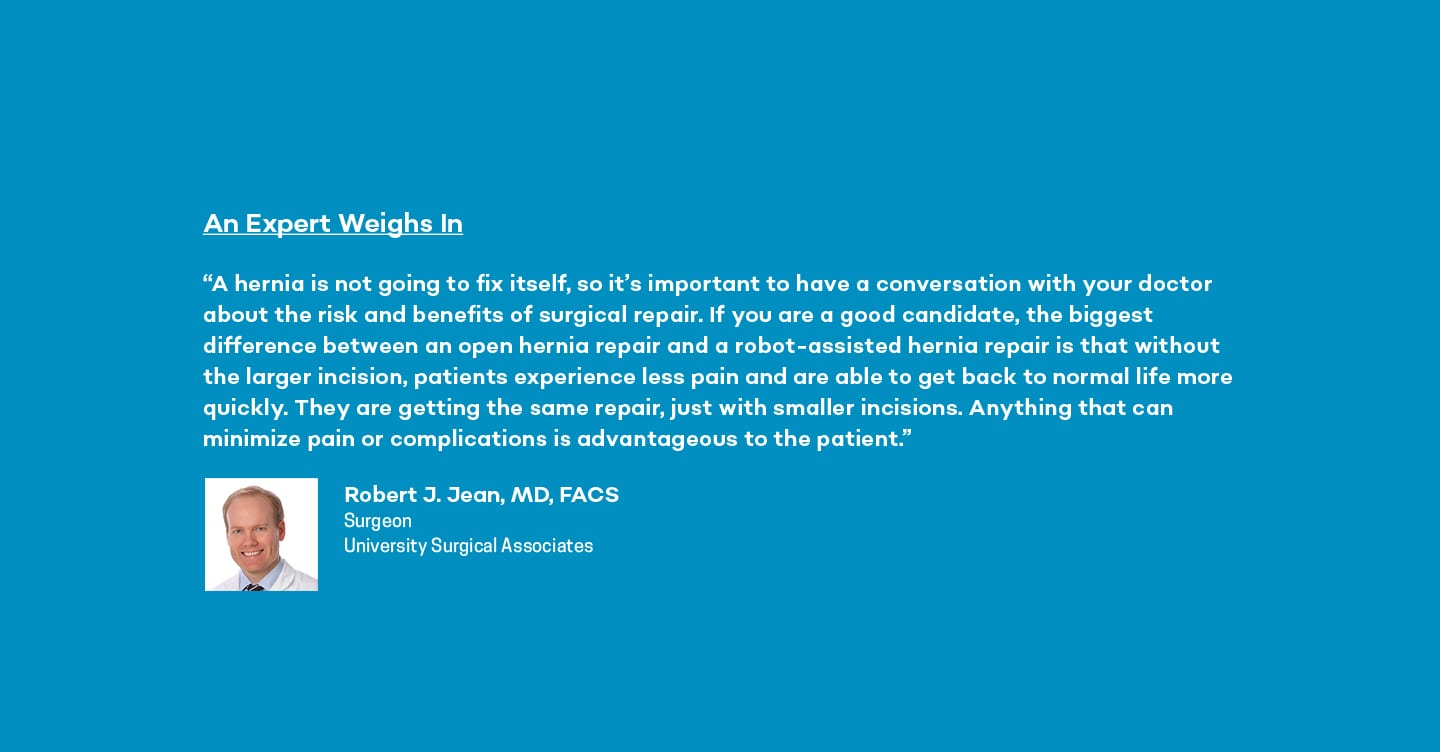Advancements in Medicine Section
Understanding Hernias
A hernia is an unusual bulge that protrudes through an opening in the muscle tissue that is supposed to keep it in place. Most hernias appear in your abdomen, though you can also see them in the upper thigh and groin areas. While hernias aren’t immediately life-threatening, they don’t go away on their own. In some cases, if the hernia isn’t presenting symptoms, your doctor might recommend a watch-and-wait approach. If symptoms are present and causing issues, surgery may be required to prevent dangerous complications.
New Solutions
Traditionally, hernia repair was done through what’s known as an “open” surgery, in which your doctor would use handheld tools to repair the damage through an incision that ran the length of the hernia. While this is still the tried and true method for many surgeons, it requires a larger incision, which can lead to greater patient pain, potential wound-healing complications, and a lengthier stay in the hospital.
Today, robot-assisted surgery is an option for hernia repair. This is a minimally invasive, laparoscopic approach that is completed through a few small incisions using a robotic technology system known as the da Vinci.
What to Expect from the Process
To complete a robot-assisted hernia repair surgery using the da Vinci system, your surgeon will sit at a console next to you and operate through various small incisions with long-handed tools. A camera gives the surgeon a high-definition, three-dimensional, magnified view of your body on a video screen, and every movement the surgeon makes through the console is translated in real time through the instruments.
Depending on the size of the hernia, robot-assisted hernia repair can typically be completed in about one to three hours.
Benefits to Patients
Robot-assisted hernia repair can take what would traditionally require a massive incision and several-day stay in the hospital and turn it into an outpatient or overnight procedure. This means patients can get back to life faster and easier. It also limits incision-site pain and reduces the chance of wound-healing complications.



